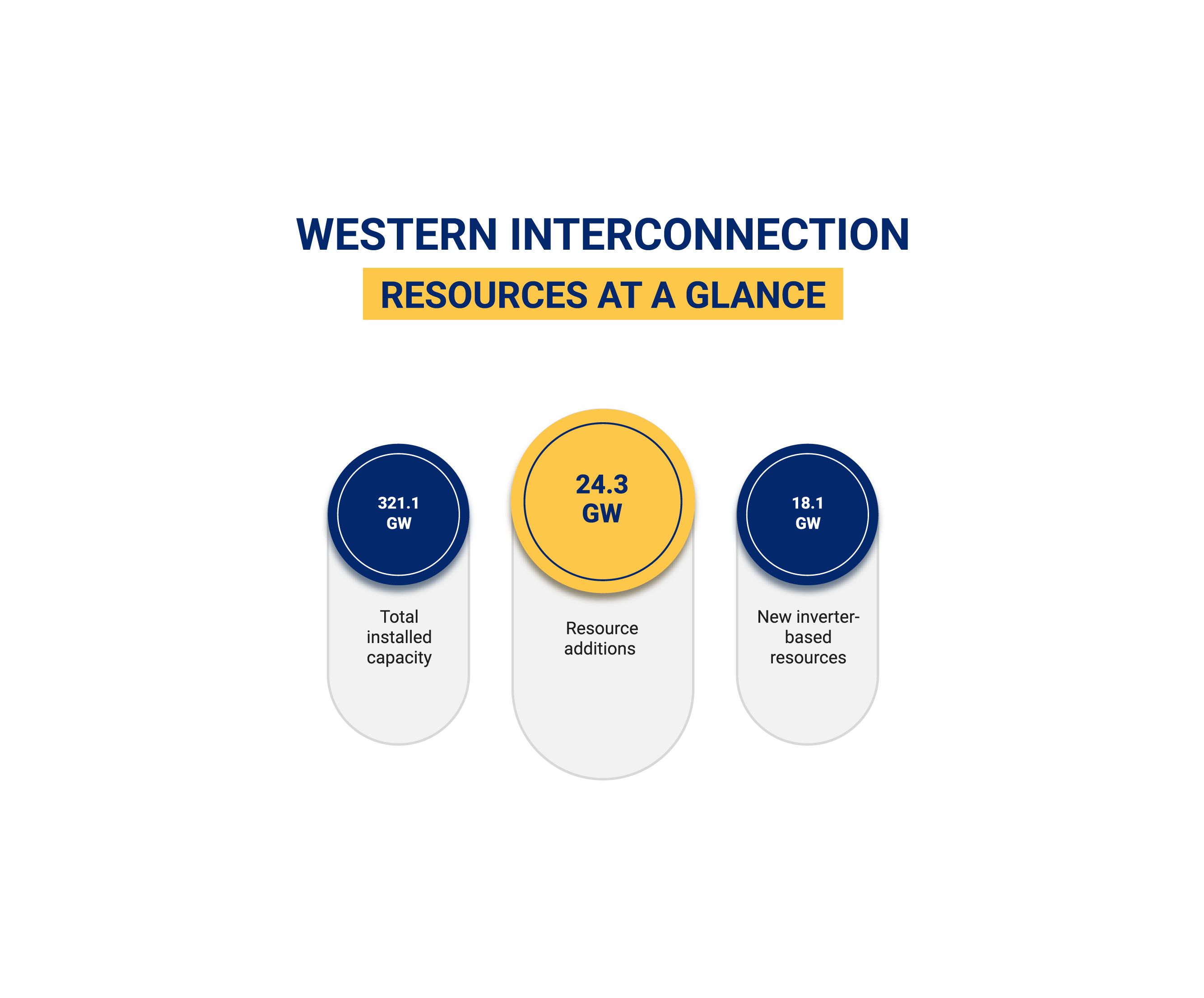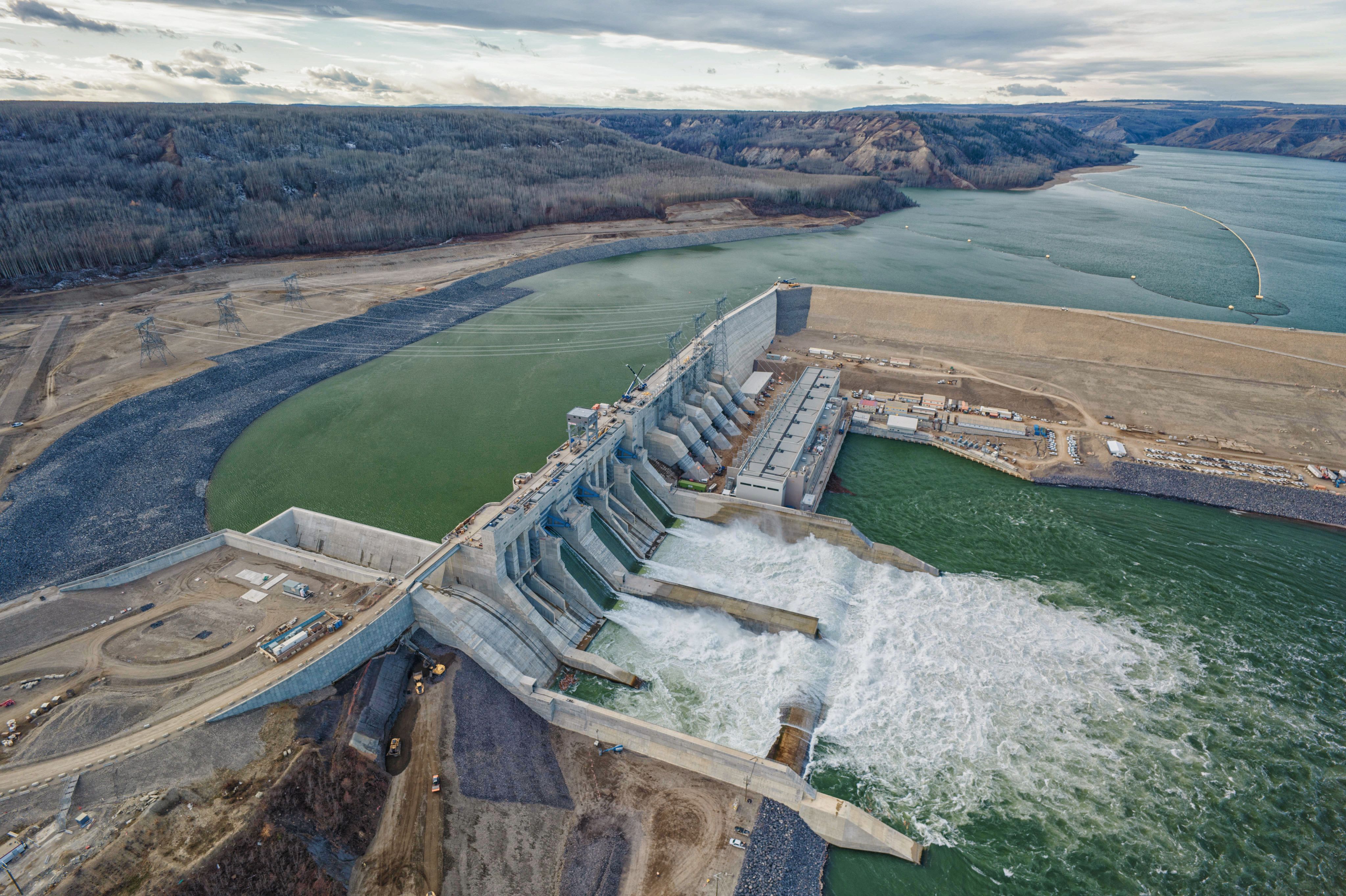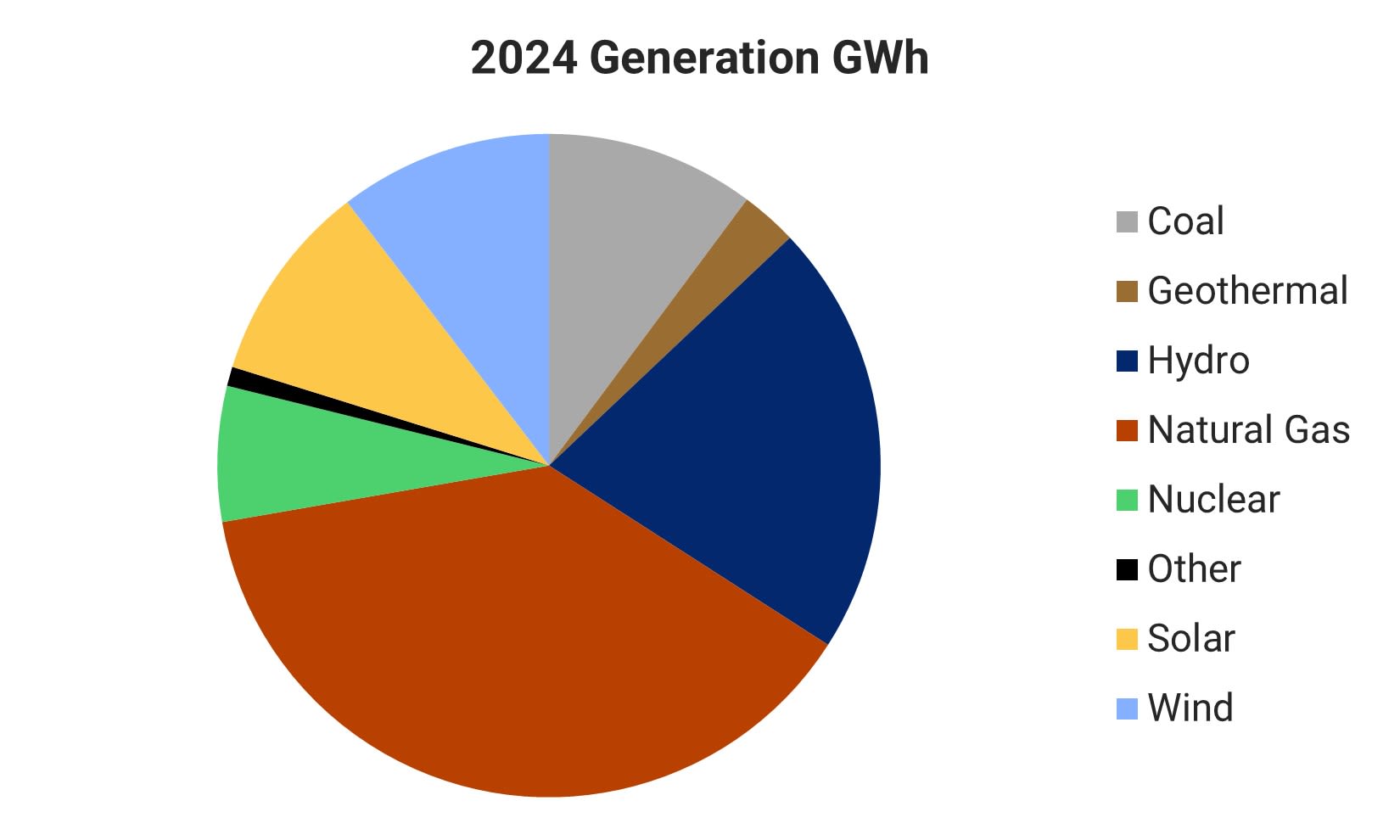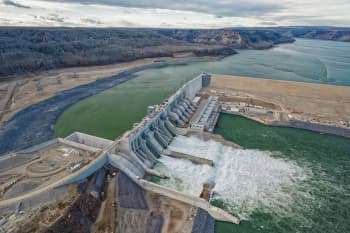State of the Interconnection 2025

Actual-to-Planned Resource Additions
Entities forecast a 20% increase in annual demand over the next decade. This will require unprecedented resource growth. Recent resource additions may indicate how well the Western Interconnection may meet this challenge. Industry added more than 24 GW of new resources in 2024. While this is only 80% of the new resources entities planned to build in 2024, it is significantly more than the 10-year annual average build rate of 7.4 GW. The West will have to build at the 2024 rate at least to meet forecast demand.
Resource Portfolio
The Western Interconnection's resource portfolio continues to transform, heavily driven by energy policy.
- 75% of the new generation added in 2024 was inverter-based resources (IBR).
- 5.5 GW of natural gas generation was added in 2024, a ten-fold increase over what was added in 2023.
- 921 MW of coal was retired, down from 1.2 GW in 2023.

Capacity
Approximately 24.3 GW of new generation capacity were added in 2024, mostly solar, battery storage, and natural gas resources. That is up from 15 GW added in 2023. Since 2015, more than 70 GW of IBRs have been added to the system, while more than 11 GW of coal resources have been retired.
Generation
Inverter-based Resources
Over the last five years, installed capacity of IBRs has risen from 52 GW in 2020 to 100 GW in 2024. In 2024, approximately 18 GW of IBRs were added in the Western Interconnection, including:
- 8 GW solar generation, totaling 44 GW as of 2024
- 3 GW wind generation, totaling 39.3 GW as of 2024
- 7 GW battery storage, totaling 16.7 GW as of 2024
Natural Gas
In 2024, entities added 5.5 GW of new natural gas capacity, 10 times the amount added in 2023 and more than has been added during any year in the last decade.
Retirements
In 2024, entities retired 1.4 GW of generation capacity. Most of the retired capacity was coal (920 MW) and natural gas (413 MW). Coal retirements slowed in 2024, decreasing from 2 GW in 2022 and 1.2 GW in 2023. Over the next decade, entities plan to retire an additional 12 GW of coal, which accounts for 46% of the 26 GW of generation planned for retirement over the next 10 years.
New Resources
The capacity of new resources added in 2024 (24.3 GW) is approximately 80% of what was planned for 2024 (30.65 GW). Between 2014-2023, the average generating capacity added annually was approximately 7.4 GW.
New dam in British Columbia begins generating electricity
In October 2024, the Site C hydroelectric project in northeast British Columbia began generating electricity at one of its six generating units. The second unit came into service in December, and the remaining units are on track to be operational by fall of 2025. Once complete, the new facility will have a nameplate capacity of 1.1 GW and add about 8% more supply to British Columbia's electricity grid, making it one of the largest new hydro facilities built in North America in decades. The $16 billion project was first envisioned in the 1950s and revived in 2010.
Additional facts
- When complete, the facility will produce 5,100 GWh of electricity annually, enough to power 450,000 homes
- It took 11 weeks to fill the reservoir
- 1,000 inspections and a million instrument readings helped to ensure safe operation of the dam
- The dam is 60 meters high and 500 meters wide at its base
- 6,069 people worked on the project at its peak employment
- It took 15.5 million cubic meters of earthfill material to construct the dam

IBR Registration Initiative
After several IBR-related system disturbances in recent years, FERC issued a directive in November 2022 requiring NERC to identify and register the owners and operators of IBRs that have an “aggregate, material impact on the reliable operation” of the bulk power system. NERC modified its rules of procedure accordingly. Throughout 2024, WECC worked to identify applicable facilities in the Western Interconnection. WECC continues to analyze 322 facilities to determine whether they need to register. Key deadlines for the initiative include:
FERC Order 901
FERC issued Order 901 in October 2023, directing NERC to develop new or modified Reliability Standards addressing reliability gaps related to IBRs in the following areas: data sharing, model validation, planning and operational studies, and performance requirements. In response, NERC created a work plan with four key milestones outlining how it would address the problem:





































